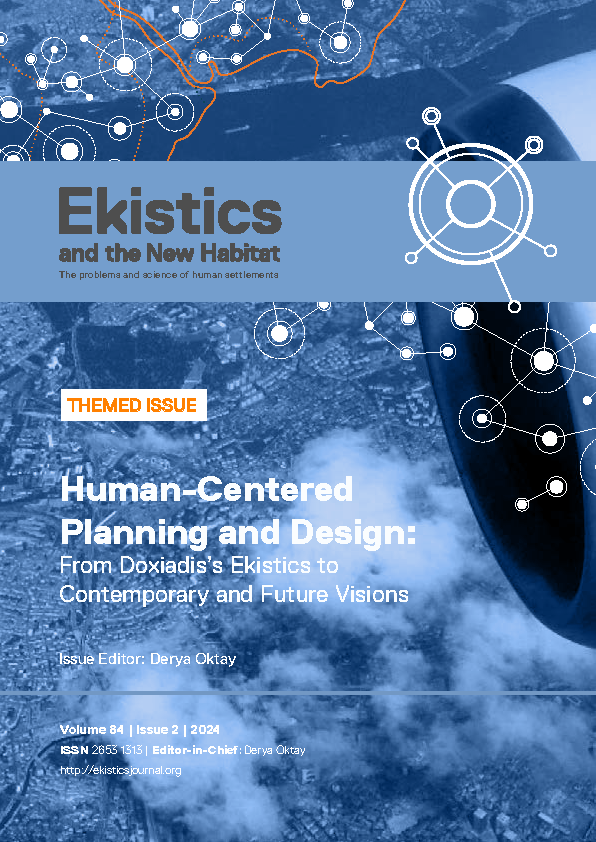Mediated Ekistics: An Urban Communication Perspective
DOI:
https://doi.org/10.53910/26531313-E2024842719Keywords:
McLuhan, Doxiadis, media, technologiesAbstract
Marshall McLuhan, media theorist, known for his assertion the “medium is the message,” argued technological innovation was the driving force of political, economic and social transformations. This extended to a concern with human settlements, the planning of places and cities. His relationship with Constantinos Doxiadis included participation in the Delos Symposium (1973) and published contributions to Ekistics. In a letter to McLuhan, Doxiadis noted McLuhan’s work was “’essential’ to a reconsideration of human settlements.”
Today this relationship takes on greater significance, a fact not unnoticed by those in the field of urban communication, which is an interdisciplinary perspective emphasizing the centrality of communication and technology in the understanding of the urban settlements.
Planners, architects, and those studying human settlements recognize that space is the creation of social forces, shaped by the needs and expectations of users who today live in media filled environments. The humans in human-centered design are media dependent if not media addicted. New spatial forms must account for the elevated value people now place on temporal, aspatial proximity at the expense of some degree of physical proximity. This human-technology association encompasses more than smart cities and data-driven solutions. The impact of dematerialized spaces of interaction on design of sustainable settlements needs consideration. This article revisits the relationship of media visionary McLuhan, examines media developments from 1973-2024, and using an urban communication perspective, considers the goals of ekistics in light of what has been called the “reconstruction of space on the basis of digitalization.”
Downloads
Published
How to Cite
Issue
Section
Categories
License
Copyright (c) 2024 Ekistics and The New Habitat

This work is licensed under a Creative Commons Attribution-NonCommercial-NoDerivatives 4.0 International License.
Please contact the Editor-in-Chief: editor@ekisticsjournal.org, should you have any questions on copyright for your submission.
This research journal is for Educational and Knowledge development purposes.
All material published on this site complies with our copyright and terms as described by the Attribution-NonCommercial-NoDerivaties 4.0 International (CC BY-NC-ND 4.0)






